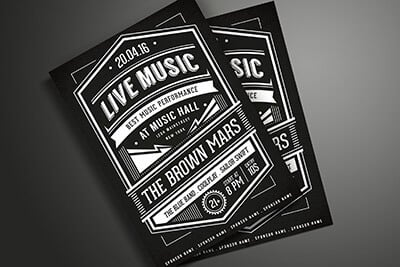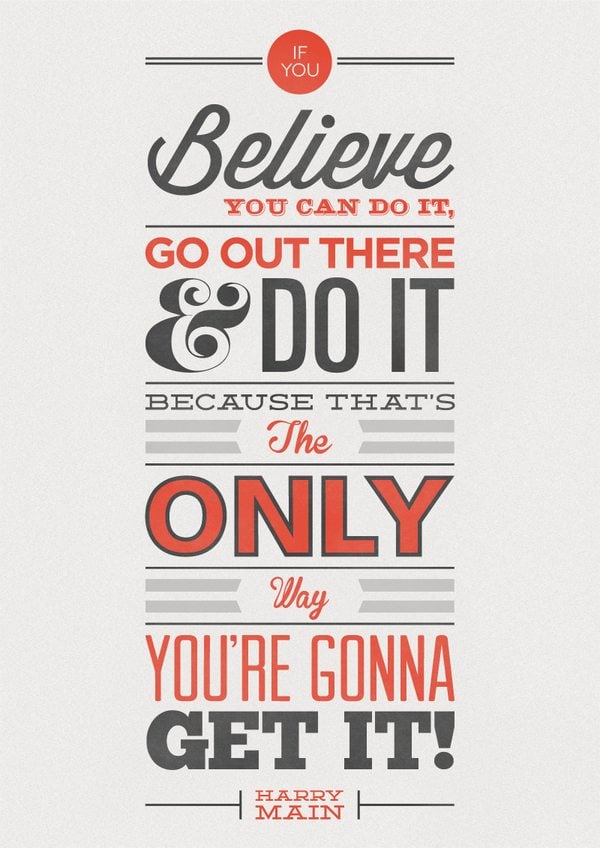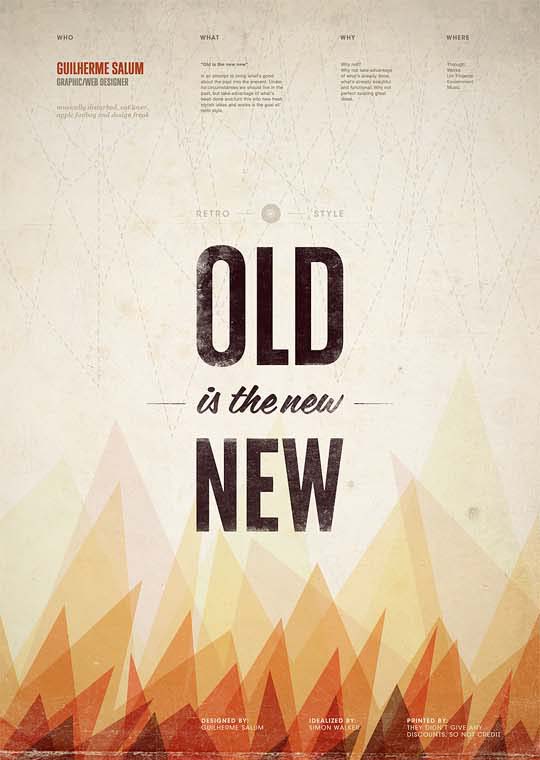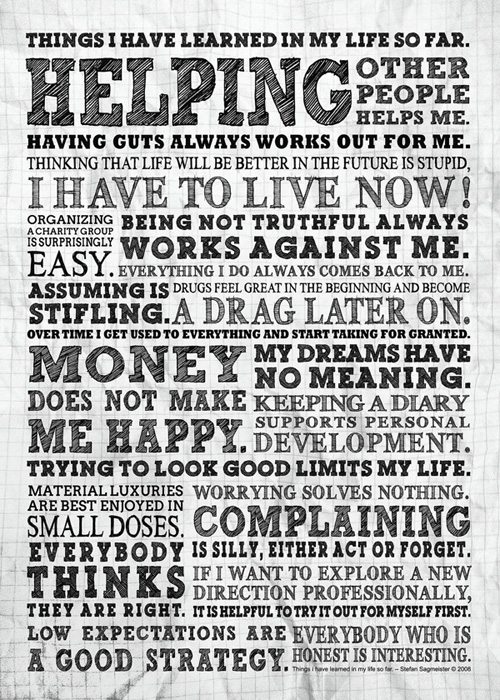Typographic Posters: 100 Stunning Examples
Typography is all about delivering art and information in a beautiful medium. Designing typographic posters is no easy task, and arranging and modifying each individual component is a skilled task.
Not only that, special care has to be taken when it comes to the legibility and aesthetics of the fonts being used in the poster, choosing a type that works well together and conveys the right impression.
To pay our tribute to all the experienced typographic artists in today’s post, as well as inspire you to try your own hand at this type of art, we have come up with a grand compilation of a hundred typographic posters from around the web.
Read on to browse through some delightful inspiration and beautiful art.
2 Million+ Poster Templates, Flyer Templates, and Design Resources With Unlimited Downloads
Download thousands of stunning poster templates, flyer templates, and more with an Envato Elements membership. It starts at $16 per month, and gives you unlimited access to a growing library of over 1,400,000 poster designs, flyers, print templates, themes, photos, and more.
Jamming Flyer Poster
This is a poster design that’s flowing with creativity. It features a modern design with letters scattered throughout the poster. Yet it doesn’t affect the readability of the poster.
You can download this poster from Envato Elements and customize it to use with your own projects. The poster includes a fully-layered PSD file with several backgrounds to choose from.
Minimal Party Poster
Minimalism is the key element of this poster design. It features a design style that’s ideal for making a poster for summer events, a beach party, and tech events. This A3 poster comes in 3 different color schemes. You can download it and customize using Adobe Illustrator.
Summer Poster Template
This beautifully modern typographic poster template comes with a design that’s most suitable for making a poster to promote your special summer festivals and parties. You can download the PSD free of charge.
Vintage Motivational Quote Poster
A free typography poster featuring a colorful design. This template is great for designing a poster with a motivational quote to hang on your office wall or share on your social media channels.
Live Music Typography Poster
Working on a poster design for a music event or a live show? Then use this template to quickly create a great looking typographic poster to promote the event. This template comes in 2 different colors and in easily editable PSD files.
Vintage Typography Poster v.01
This template features a mixed typographic design with both modern and vintage elements. It’s available in an A4-size PSD file. The template is ideal for crafting posters for special events, parties, and celebrations.
Free Retro Christmas and New Year Flyer
Even though this is designed as a flyer, you can easily turn it into a poster by simply resizing the PSD file. This template is best for designing a poster or a flyer for a Christmas event. And you can download it for free.
Vintage Typography Poster v.02
Another modern vintage poster with a typographic design. This poster is also available as an A4 PSD file and you can easily edit it to make your own poster designs to promote various types of events.
City Festival Night Poster
This poster also comes with a stylish typographic design mixed with a retro feel. It’s designed to fit many different types of events, festivals, and live shows. The template comes in a print-ready PSD file with fully-organized layers for easy editing.
Vector Hand Drawn Typography Poster
A simple and a creative typography poster you can use to share a quote in a coffee shop or craft a unique social media post. This template is free to download and use with your personal projects.
Vintage Typography Poster v.03
This vintage-themed typography poster also features a design that highlights the text in an original way. The template is easily customizable and you can add your own text to this design with just a few simple clicks.
Chill Out Night Flyer & Poster
This poster template is perfect for promoting a live music event or a DJ event. It will also work great for promoting festivals and parties as well. The template comes to you in 2 different styles and 8 unique background textures.


































































































